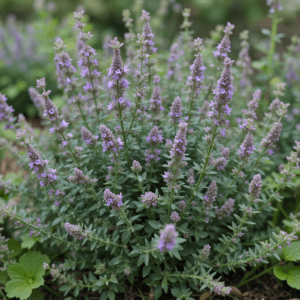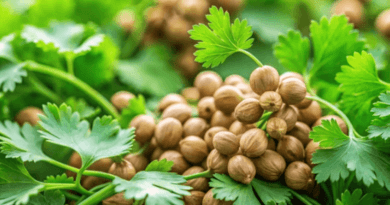Thyme Gardening
Thyme is a versatile and fragrant herb that thrives in gardens and containers. With its culinary and medicinal uses, thyme adds flavor and value to your home. Learn how to grow thyme with this easy guide.
Why Grow Thyme?

Thyme offers several benefits for gardeners and cooks:
- Low Maintenance: It requires minimal care and thrives in tough conditions.
- Culinary Uses: Thyme enhances soups, stews, and roasted dishes.
- Attractive Appearance: Its tiny leaves and delicate flowers beautify any garden.
- Pollinator-Friendly: Thyme attracts bees and butterflies, supporting biodiversity.
Choosing the Right Thyme Variety
Thyme comes in several types, each with unique characteristics. Some popular varieties include:
- English Thyme: Best for cooking, with a robust flavor.
- Lemon Thyme: Offers a citrusy aroma, perfect for teas and desserts.
- Creeping Thyme: Ideal for ground cover and decorative edges.
Pick a variety that suits your gardening goals and culinary preferences.
How to Plant Thyme
1. Select the Right Spot
Thyme loves sunlight. Choose a location with at least 6-8 hours of direct sunlight daily. If planting indoors, place the pot near a sunny window.
2. Prepare the Soil
Thyme prefers well-draining soil with a slightly sandy texture. Use a potting mix or amend garden soil with sand or gravel. Aim for a pH level between 6.0 and 8.0.
3. Planting Seeds or Cuttings
- Seeds: Sow seeds shallowly and cover lightly with soil. Water gently.
- Cuttings: Plant stem cuttings in moist soil and keep them in a shaded area until they root.
Space plants about 12 inches apart to allow proper airflow.
Caring for Thyme Plants
Watering
Thyme is drought-tolerant. Water only when the soil is dry to the touch. Overwatering can harm the roots.
Pruning
Trim thyme regularly to promote growth and prevent woodiness. Prune after flowering for the best results.
Fertilizing
Thyme doesn’t need heavy fertilization. Use a light, balanced fertilizer once in spring.
Pest Control
Thyme is generally pest-resistant. However, watch out for aphids and spider mites. Use neem oil or insecticidal soap if needed.
Harvesting Thyme
Harvest thyme once the plants are mature, usually after 2-3 months. Cut sprigs just above a leaf node to encourage regrowth. Use fresh thyme or dry it for later use.
Common Problems and Solutions
- Yellowing Leaves: Overwatering or poor drainage. Let the soil dry out.
- Leggy Growth: Insufficient sunlight. Move the plant to a sunnier spot.
- Slow Growth: Lack of nutrients. Apply a light fertilizer.
Tips for Growing Thyme Indoors
- Use pots with drainage holes.
- Choose a south-facing window for optimal sunlight.
- Rotate the plant periodically for even growth.
Conclusion
Thyme gardening is an enjoyable and rewarding experience. This hardy herb is perfect for beginners and seasoned gardeners alike. With proper care, you’ll have a continuous supply of fresh thyme for your recipes and remedies.
References
- “Growing Thyme,” The Herb Society of America, www.herbsociety.org.
- “Thyme Plant Care Tips,” Gardening Know How, www.gardeningknowhow.com.
- “The Benefits of Thyme in the Garden,” National Gardening Association, www.garden.org.
-
How To Garden .https://www.gardendesign.com/how-to/#101




